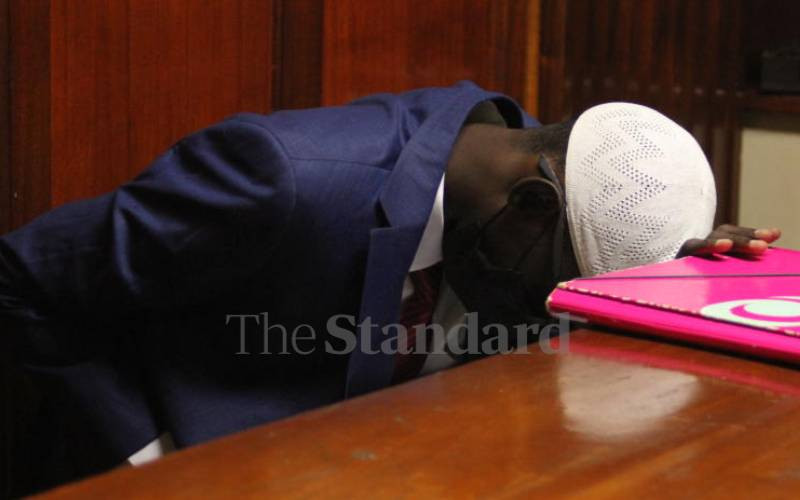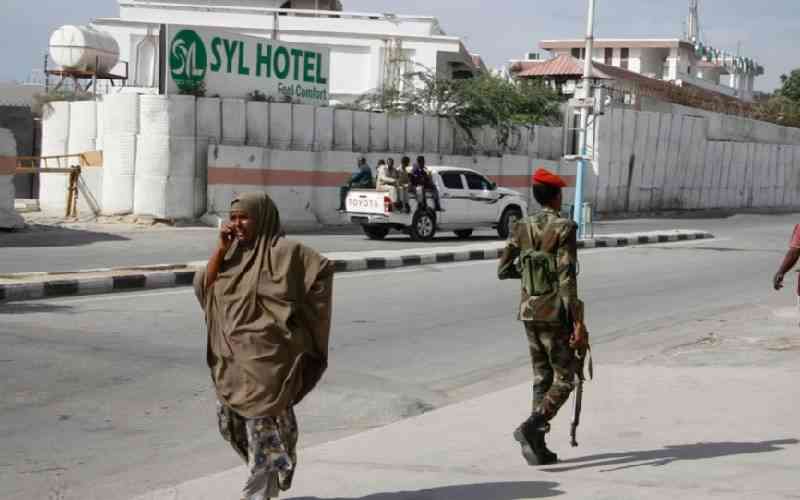By DANN OKOTH
Kenya has suffered many attacks from Al-Shabaab, especially since the Kenya Defence Forces crossed the border in October 2011, to fight against the militia.
But who exactly are the Al-Shabaab? The group is an off-shoot of the Islamic Courts Union (ICU), which splintered into several smaller factions after it was defeated in 2006 by the Somali Transitional Federal Government (TFG) and the their Ethiopian military allies.
The term Al-Shabaab means “the youth” in Arabic. The group says its motive is to wage jihad (holy war) against “enemies of Islam” and has been engaged in combat against the TFG and Amisom.
The Islamist militants, who have links with Al-Qaeda, have imposed a strict version of Sharia law in areas under its control, although they have been ejected from their strongholds such as Mogadishu and Kismayu. They were ousted from Mogadishu by TFG troops and their Amisom forces in August 2011. In September 2012, KDF forces also managed to throw the militants out of Kismayu. The militants, however, still control many rural areas.
Al-Shabaab’s troop strength as of May 2011 was estimated at 14,426 militants. In February 2012, Al-Shabaab leaders differed with Al-Qaeda and quickly lost ground.
Alleging ulterior motives on the part of foreign organisations, Al-Shabaab members have also intimidated, kidnapped and killed aid workers, leading to a suspension of humanitarian operations and an exodus of relief agencies. It also regularly attacks government installations in Somalia.
Al-Shabaab has been designated a terrorist organisation by several western governments, including the US.
The militia is led by Ahmed Abdi Godane, who is also known as Mukhtar Abu Zubair, who is rarely seen in public.
An ideological rift within the group’s leadership emerged recently due to pressure from a drought and the assassination of top officials in the organisation.
Kampala attack
Al-Shabaab is hostile towards Sufi traditions and has often clashed with the militant Sufi group, Ahlu Sunna Waljama’a.
The outfit also has links with Al-Qaeda in Islamic Maghreb and Boko Haram in Nigeria.
The group was responsible for two bomb attacks in Kampala, Uganda, during the 2010 football World Cup final, which killed 76 people.
Al-Shabaab have also been blamed for various other, mostly grenade, attacks in Nairobi, Mombasa and other parts of the country that have killed scores and left many other injured. Recently, the militia released two Kenyan civil servants, Edward Mule, a district officer in Burder division, and Fredrick Irungu Wainaina, a registrar of persons, who were abducted and held in captivity since January 11, 2012.
Stay informed. Subscribe to our newsletter
Meanwhile, security has been beefed up in various key installations in Coast region following Saturday’s terrorist attack in Nairobi.
[email protected]
 The Standard Group Plc is a
multi-media organization with investments in media platforms spanning newspaper
print operations, television, radio broadcasting, digital and online services. The
Standard Group is recognized as a leading multi-media house in Kenya with a key
influence in matters of national and international interest.
The Standard Group Plc is a
multi-media organization with investments in media platforms spanning newspaper
print operations, television, radio broadcasting, digital and online services. The
Standard Group is recognized as a leading multi-media house in Kenya with a key
influence in matters of national and international interest.
 The Standard Group Plc is a
multi-media organization with investments in media platforms spanning newspaper
print operations, television, radio broadcasting, digital and online services. The
Standard Group is recognized as a leading multi-media house in Kenya with a key
influence in matters of national and international interest.
The Standard Group Plc is a
multi-media organization with investments in media platforms spanning newspaper
print operations, television, radio broadcasting, digital and online services. The
Standard Group is recognized as a leading multi-media house in Kenya with a key
influence in matters of national and international interest.









